
13 minute read
THE PERSISTENCE OF DESTINO
“Destino” tells the story of Chronos, the god that personifies time, and his ill-fated romance with a mortal woman. Dalí described the short as “a magical exposition of the problem of life in the labyrinth of time,” while Disney simply said it was “just a story of a girl in search of her real love.” While the length of the film is short, sitting at six-and-a-half minutes, the animation has no problem with getting its story across. The mortal woman Dahlia floats across surrealist landscapes of Dalí’s paintings wandering the vast landscape as Chronos tries to break from his bonds to pursue Dahlia. Dahlia transforms into a range of various shapes in an effort to find a form that coincides with Chronos’s immortality. The two continue to shift and move in surreal ways before they finally become one. Dalí and Disney began work on the short film in 1946, creating 22 paintings and more than 135 storyboards, drawings, and sketches. After this, the studio illustrated around 20 seconds of original animation based on these ideas. However, “Destino” was quickly tabled due to financial pressure from World War II and the studio’s prior commitments. “Destino” remained in the Disney vault for decades and sadly neither Walt Disney nor Salvador Dalí was alive to see their creation come to fruition. Nevertheless, in 1999 Roy E. Disney, Walt Disney’s nephew, found the shelved animation and decided to finish the film while completing production on “Fantasia 2000.” The studio knew if they were going to pick up this project again they had to do it right. They wanted to make “Destino” as authentic to its original art as possible, so when work resumed, the studio brought back John Hench, who worked at Disney for sixty-five years and is considered one of the studio’s most gifted artists. Hench returned at 90 years old and produced so much artwork that he was eventually listed as a co-author alongside Dalí. After five decades since its conception, “Destino” was finally released in 2003.
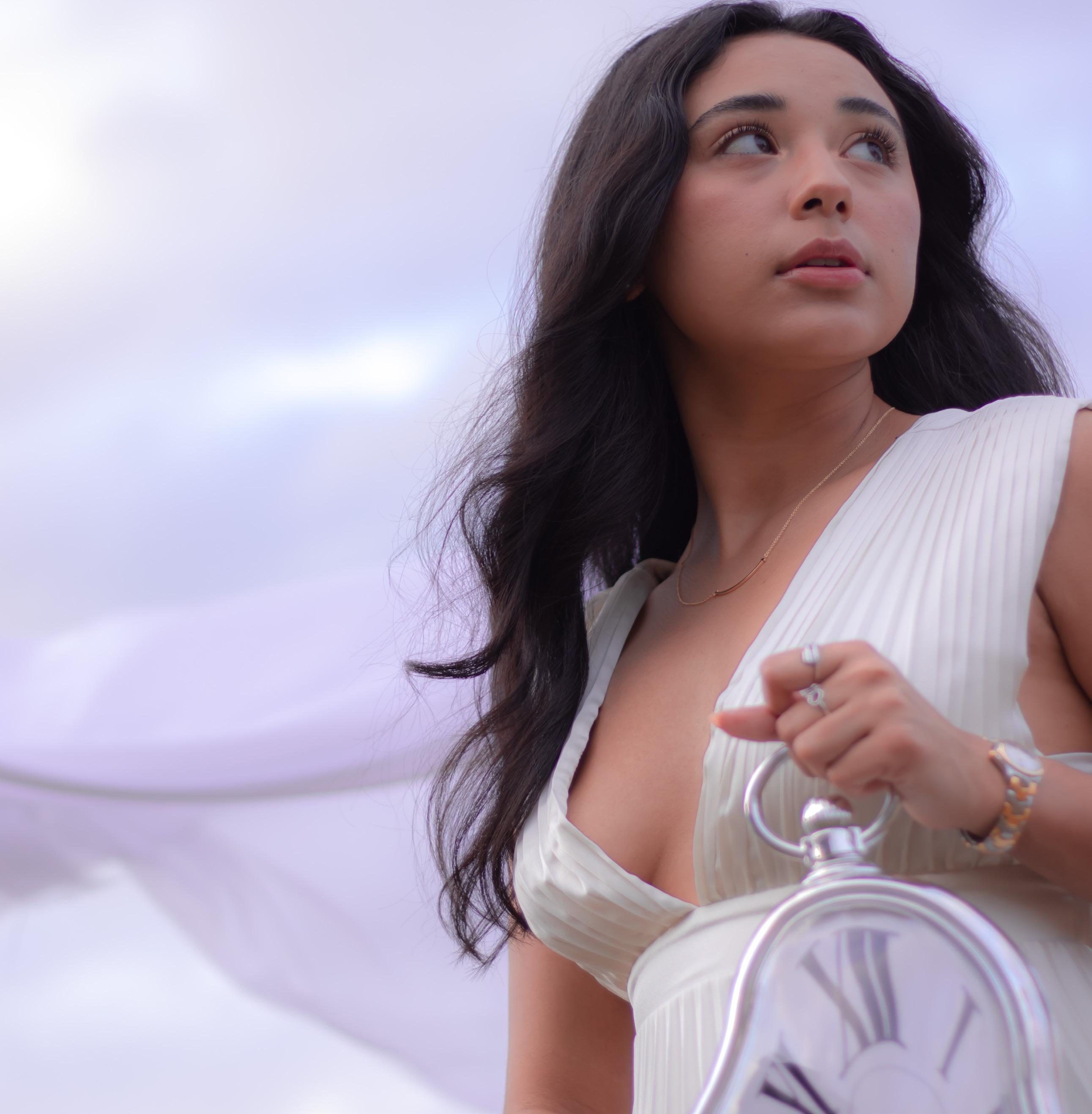
DESTINO’S HAPPILY EVER AFTER
The short became a breathtaking tribute to the lifelong friendship and collaboration between Dalí and Disney. These two artists were quintessential to shaping the art world in their respective fields and the collaboration will remain in art history forever.
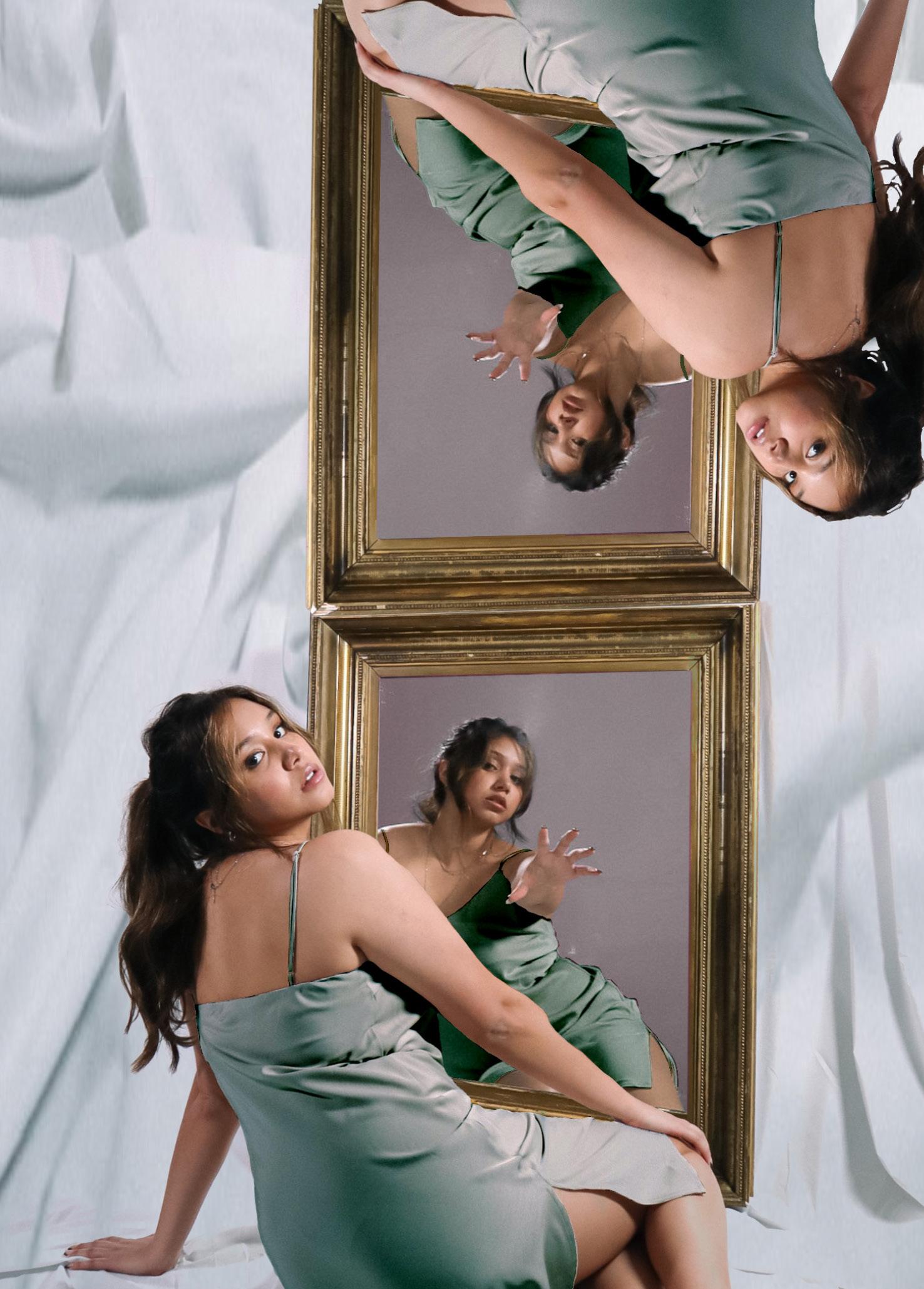
How Black Mirror Is Unfolding The Future
A lot has happened since “Black Mirror” appeared on Netflix in 2016. Created by Charlie Brooker, the science fiction series was made to explore the flaws of technology utilizing Murphy’s Law, which states anything that can go wrong will go wrong. Through the examination of modern society with evolving technology, the show represents the wedge growing between humans due to technological advancements. Each episode of the show is a stand-alone story that offers a different perspective on how technology could impact mankind in the future. Brooker is the Edgar Allen Poe of the digital age as he seems to have a knack for predicting societal fallouts due to the unfortunate combination of humanity’s flaws with technological tragedy. These dangers appear to be just around the corner or, as he describes, “visions of the future five minutes from now.” Few TV series have managed to blend social satire, political commentary, and moral tragedy so seamlessly and effectively. The purpose of technology is to help us, connect us, and create a more efficient life for everyone. Technology is a tool after all, meaning that it can be used for good or for bad, and “Black Mirror” explores the latter. This series embodies Murphy’s Law by showcasing the possibilities of what could go wrong since technology can very well go wrong.
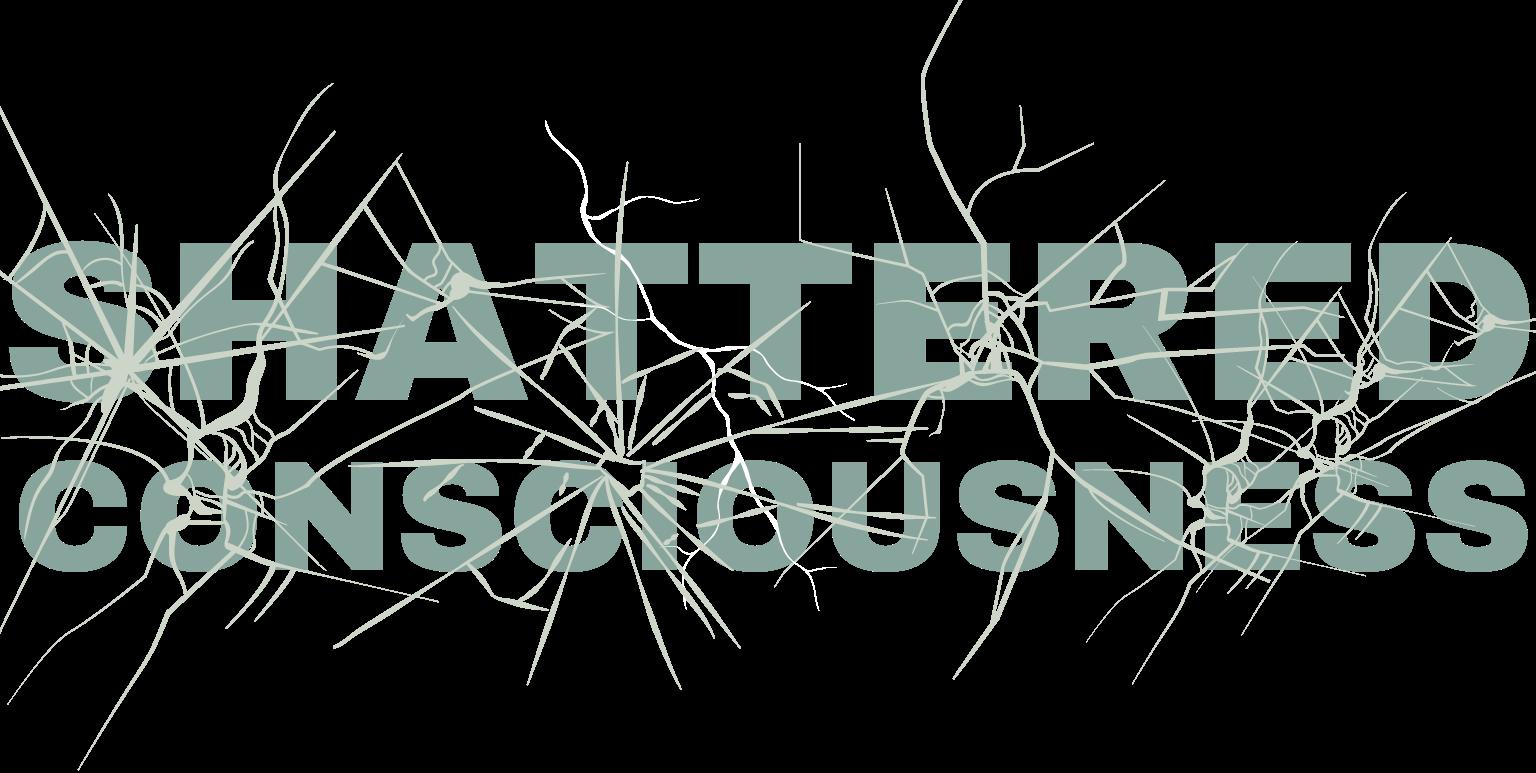
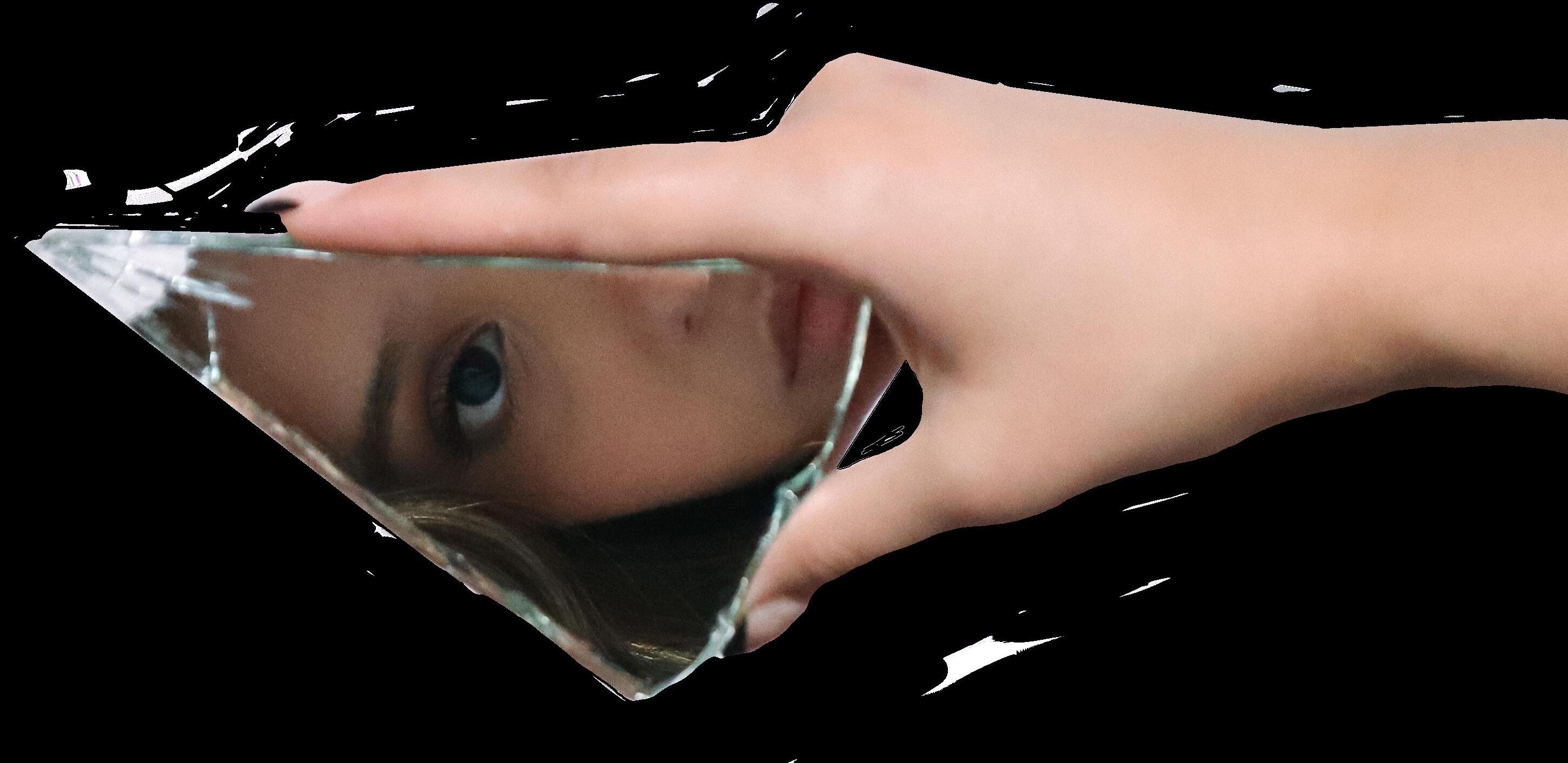
The first few seasons of this series were about a future we could see rapidly becoming a reality from rating systems to artificial intelligence technologies. But, the last couple of seasons explores a future totally unexplored, with the main problem being the most unpredictable factor in our world: humans. As Brooker explained in The Guardian, “ If technology is a drug – and it does feel like a drug – then what, precisely, are the side effects? This area –between delight and discomfort – is where “Black Mirror” is set. The ‘black mirror’ of the title is the one you’ll find on every wall, on every desk, in the palm of every hand: the cold, shiny screen of a TV, a monitor, a smartphone. 32
“
Just as season three was released, China’s Communist Party proposed the implementation of a grading system and denied basic privileges to those who fall short of the score. The ambition is to collect every scrap of information available online about China’s citizens and then assign each of them a score based on their political, social, and 33 legal credit. This is strikingly similar to episode one of season three, “Nosedive,” where everyone is ranked, and the ranking determines your reputation, what restaurants you can attend, and how you essentially live your life. While “Black Mirror” has some frightening episodes, as the concepts can seem too mindblowing to wrap our heads around, there are some situations and themes presented in 2016 that are appallingly becoming reality.
Brooker claims the show is not produced with the intent of being anti-technology. Rather, “Black Mirror” is satire, demonstrating the pitfalls we risk as our society progressively becomes more dependent on technology. The fourth season of the show presents another raft of believably near-future technology: parenting surveillance systems, memory recall, recording machines, highly advanced dating apps, inescapable virtual realities, and cloud consciousness. The third episode, “Hang The DJ’’ explores the question of what dating apps will look like in the future. Would you leave your love life up to algorithms and coding if the system had a 99.99% chance of finding your soulmate? Dating apps are becoming more and more popular, especially after the pandemic, as we try to recreate the serendipitous encounter of meeting someone authentically by a dopamine-rush-induced swipe right.
Since we are so dependent on technology in the modern era, shows and even books are developing new ways to demonstrate our trust in computers to decide our futures for us. The concept of this episode from “Black Mirror” may sound similar to “The Soulmate Equation,” a popular book by Christina Lauren. In this novel, a matchmaking company suggests their DNA compatibility technology can match you with your soulmate based solely on biology. There is nothing wrong with wanting to meet people by whatever means possible including from apps and websites; however, with technology rapidly evolving, our blind trust in the system is becoming increasingly troublesome. From “Black Mirror” to trending novels, it seems that we as a society want to leave the fate of our lives into the hands of 0s and 1s. This begs the inevitable question – should we be concerned with technology destroying modern society as we know it?
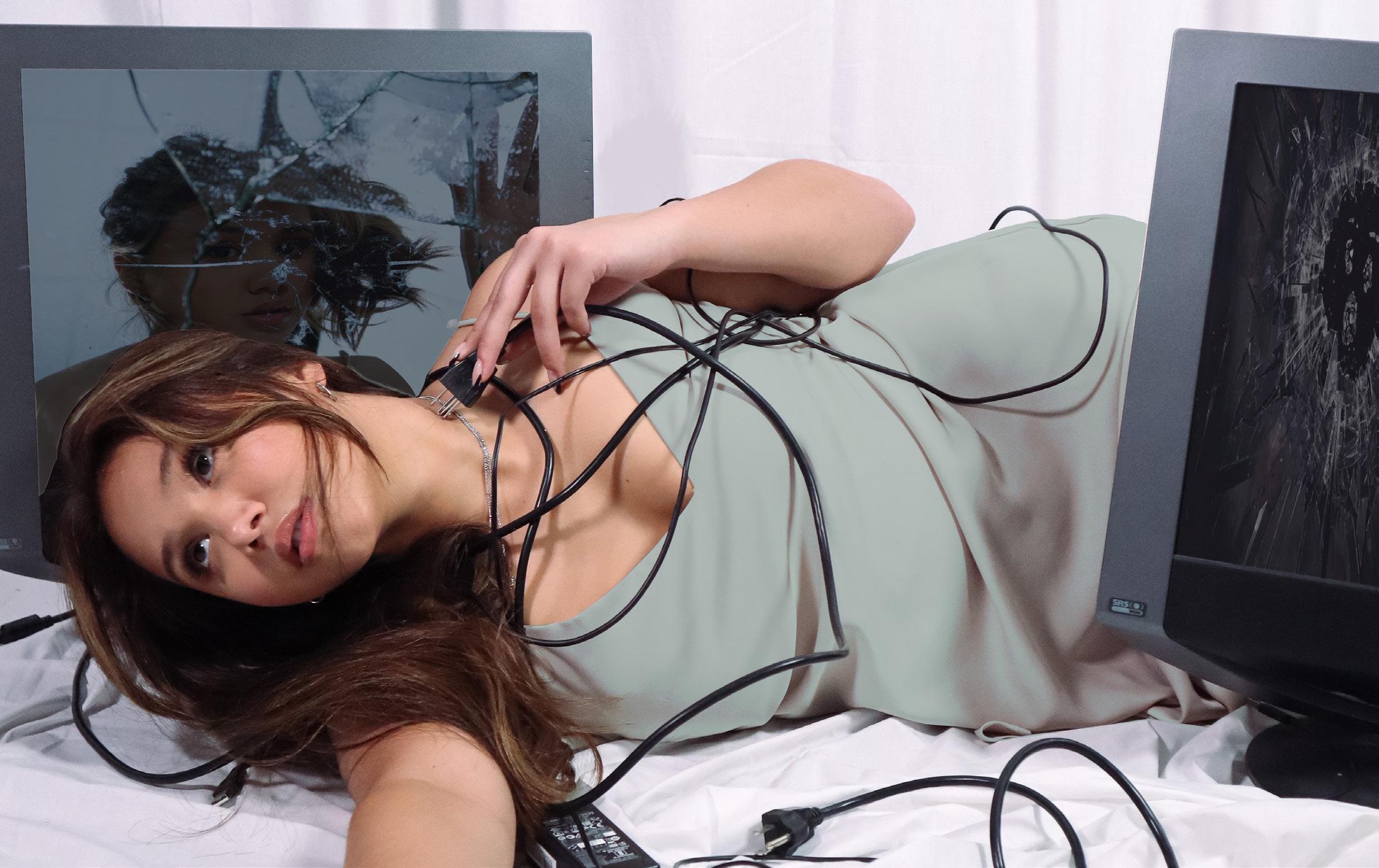
From electric cars to inhabiting Mars, Elon Musk has built his career on technology. And yet, he calls artificial intelligence (AI) our “biggest existential threat.” He reiterates these fears in multiple interviews saying, “As AI gets probably much smarter than humans, the relative intelligence ratio is probably similar to that between a person and a cat, maybe bigger.” One of the recurring themes in “Black Mirror” is the idea that AI technology can become too uncontrollable and too powerful for humans to control. In the episode “Metalhead,” autonomous robots become self-aware and begin hunting humans. In “Be Right Back,” a grieving widow uses AI technology to recreate her deceased partner, but the virtual copy becomes increasingly uncontrollable and ultimately leads to tragedy. Similar to how Brooker showcases in “Black Mirror,” Musk agrees that
Musk’s concerns are not just an out-of-character technological pessimism, but rather an optimism that if we can get ahead of the technology and control it, then we can make something great out of what we would be able to accomplish.
The dangers of technology portrayed in “Black Mirror” are not just fictional situations depicted on the screen. While technology has the potential to revolutionize society and improve people’s lives, it also has the potential to become a means for oppression and control from the very object we seem to have glued to our hands. “Black Mirror” serves as a reminder that the future is not predetermined and that the decisions we make today will shape the course of our technological evolution. Although tracking, algorithms, and surveillance seem inevitable, we can learn from Charlie Brooker and Elon Musk about how to enjoy the benefits of technology without letting the potential dangers of artificial intelligence consume us and take away what it really means to be human.
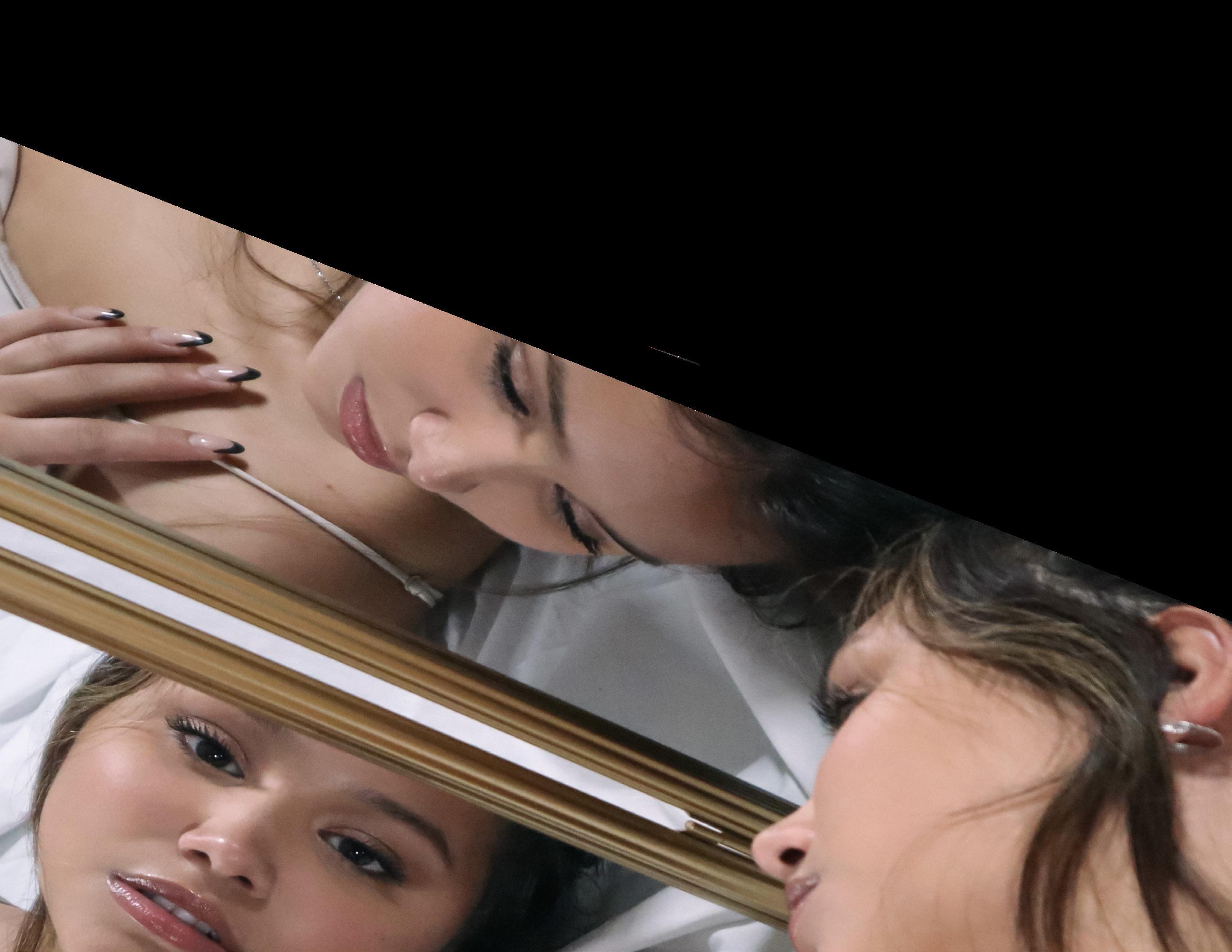
WRITER: MCKENNA MADIS
PHOTOGRAPHER: GRACE WENG
DESIGNER: JADE SUNG MODEL: ALEXIS ARCE
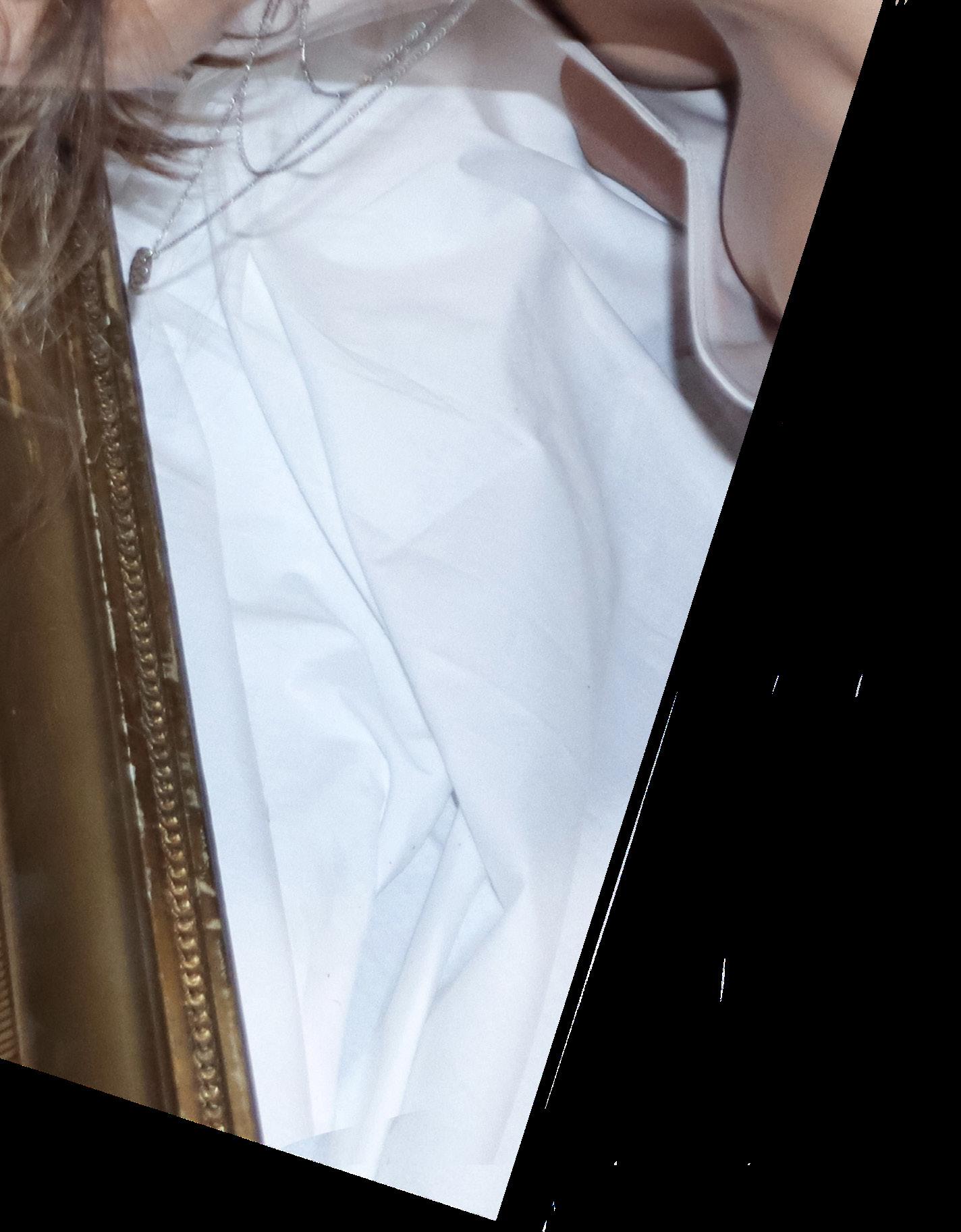
As humans, we are all reflections of the various forms of mass media consumed across our entire lifetime. We are a cut-and-paste collage of culture, a patchwork of past interests, a twisted entanglement of body and mind merely trying to distinguish itself from the next person over. We may wish to establish a distinct personal identity, often rooting ourselves in what kind of music we listen to, what movies we watch, or how we dress. Once an identity is established, we will fight tooth and nail to maintain it; after all, who wants to lose their sense of self?
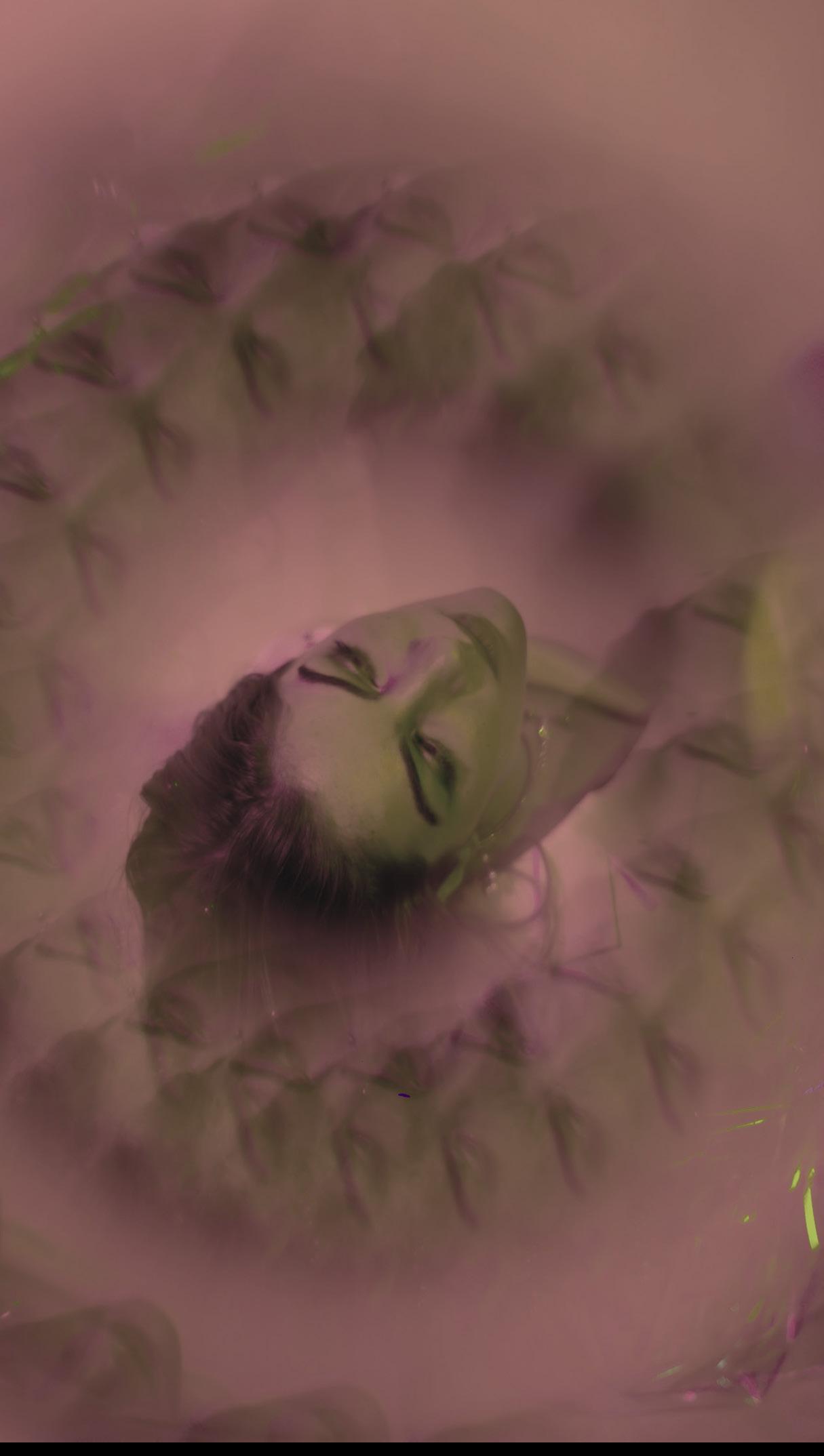
In contemporary society, the quest for internal and external congruence has led many people into the open arms of a carefully curated, pre-existing identity called an aesthetic. While the term is rooted in both art and philosophical-related scholarship, it has come to mean something beautiful and ideal, a guide for an artistic image. It has also become highly associated with the concept of personal identity, acting as a rubric for how we want to be perceived by others. Our clothes, music, and room decor practically reflect every aspect of one’s identity, and this can now be connected to a pre-established persona, leading many young people to take the idea of their aesthetic very seriously. Therefore, where does our authentic self start and our aesthetic end? Or, more importantly, do we truly have an authentic self at all?

One of the most crucial parts of understanding aesthetics is recognizing that they, in a way, exist as two entities: the internal and the external. The external aspects of one’s aesthetic exist in a more visual sense, including entities like clothes, color pallets, pinterest boards, Instagram feeds, or any other digital display of a particular image. They are a bit less dense and slightly more surface level, taking on the aesthetic as something predominantly perceptible. Do you wear cream colored clothes and dainty gold jewelry paired with Ultra Mini Ugg Boots? This makes you a Vanilla Girl.”Or, maybe you opt for long linen pants, muted pastels, and any brand of expensive sandals. This makes you a Coastal Grandma. These aesthetics are diffused and perpetuated predominantly by social media platforms, and TikTok plays a pivotal role in the rate at which they are adopted by consumers. They are also both fluid and ever-changing, meaning one “in” aesthetic can burn out just as quickly as it was born.
Another fascinating aspect of this contemporary phenomenon is the way aesthetics can shatter individuality for those initially attempting to achieve distinction. This comes from the way in which social media and online sites have standardized these images, consolidating them into something that more closely resembles a checklist than an expression of unique or fun fashion. For example, when searching this or that aesthetic online, we are often met with various beauty articles offering aid in how to achieve a specific look. Want to fit the coquette aesthetic? The baddie aesthetic? Perhaps one of the hundreds of core aesthetics is more your style. Balletcore, cottagecore, dreamcore, fairycore … it all begins to feel not only overdone but incredibly mundane, especially considering that these sites not only tell you how to look, but also how to act and even
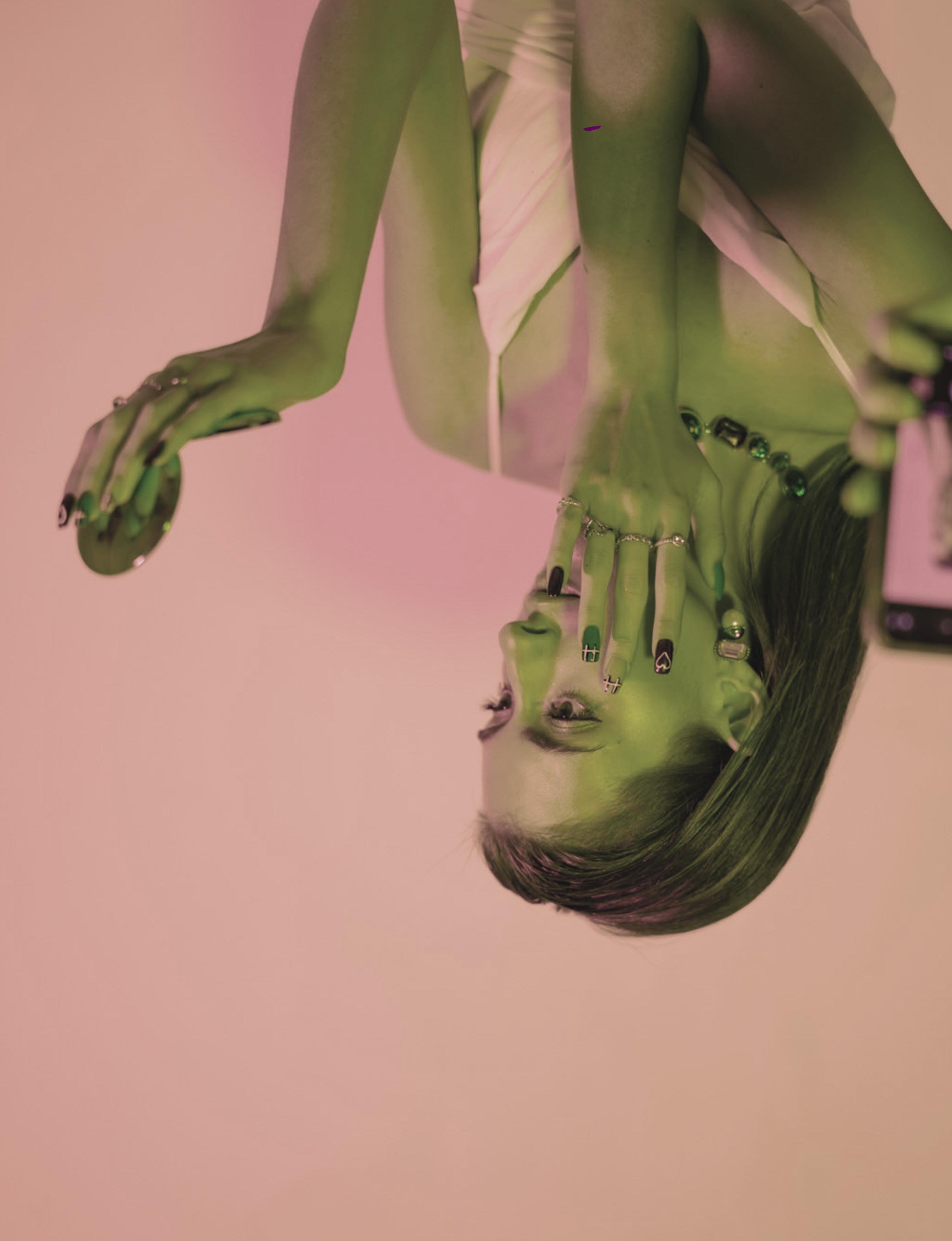
The second way aesthetics can be analyzed is through the lens of internal elements. These deal more with the media we consume and how it is adopted into both our identity and personal brand, essentially making films, art, and books a part of our personality. Internal elements, while directly correlating with the visuality of aesthetics, are a bit more difficult to distinguish as they are bidirectional. Basically –do you fit a certain aesthetic because you like a certain singer? Or, do you begin listening to that singer because you want to fit the aesthetic that they are often associated with? An example of this is the sad indie girl aesthetic that has exploded in recent years, most likely as a result of TikTok trends. This aesthetic is one characterized by Phoebe Bridgers songs and Ottessa Moshfegh novels. Do you love Sylvia Plath’s “The Bell Jar?” Listen to Mitski and Lana Del Rey? Are you more of an Augustine or a Betty in Taylor Swift’s Folklore love-triangle? Well, then this sad indie girl aesthetic must be you… right? This also applies to the more solidified concepts of the previously mentioned aesthetics. For example, if you want to fit the dark academia aesthetic, better prepare not only to rock plaid and dark turtlenecks, but also to make “Dead Poets Society,” Donna Tartt, and any kind of canonical literature your entire personality for the foreseeable future.
Now, this is where the fascinating bidirectionality of it all starts to come into play. In order to claim one of these aesthetics as your own, you must interact with, or at least appear to interact with, the types of media that it is connected with. For example, if you are claiming the previously mentioned sad indie girl persona as your own, it is implied that you listen to Phoebe Bridgers. It is implied that you tear up over Sylvia Plath poetry. It is implied that The “Virgin Suicides” is one of your favorite movies. None of this, however, has to be true — at least not initially. Ironically, whether or not you actually like or have liked any of these things is beside the point. Fitting an aesthetic, at its core, is about performativity, and wanting to be perceived as the type of person that would like something, not necessarily about being someone that actually does. Now, it is completely plausible that one fits an aesthetic because they actually do enjoy the media and overall image that it entails. However, the question is, did they already like the majority of the media related to said aesthetic before they decided to adopt it? Or, did they slowly embrace various forms of music, literature, and film perceived to be connected with the chosen aesthetic in an attempt to solidify this identity? It is a rather convoluted version of what came first, the chicken or the egg, effectively portraying humans as consumers that not only curate their identities, but also commodify them. This topic is one that is beautifully addressed by writer Rayne FisherQuann in her original piece, “Standing On The Shoulders of Complex Female Characters.”
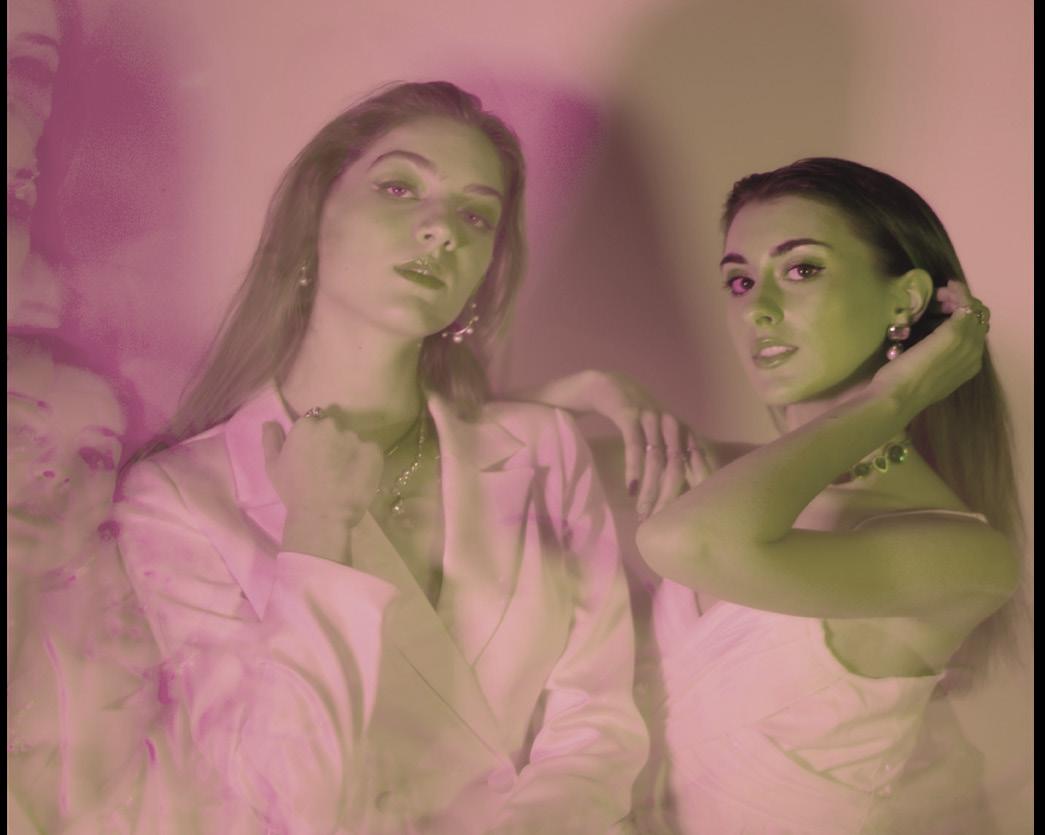
“One girl on your tiktok feed might be a self-described joan didion/ eve babitz/marlboro reds/straight-cut levis/fleabag girl (this means she has depression). Another will call herself a babydoll dress/ sylvia plath/red scare/miu miu/lana del rey girl (eating disorder), or a green juice/claw clip/emma chamberlain/yoga mat/podcast girl (different eating disorder). The aesthetics of consumption have, in turn, become a conduit to make the self more easily consumable: your existence as a Type of Girl has almost nothing to do with whether you actually read joan didion or wear miu miu, and everything to do with whether you want to be seen as the type of person who would.”
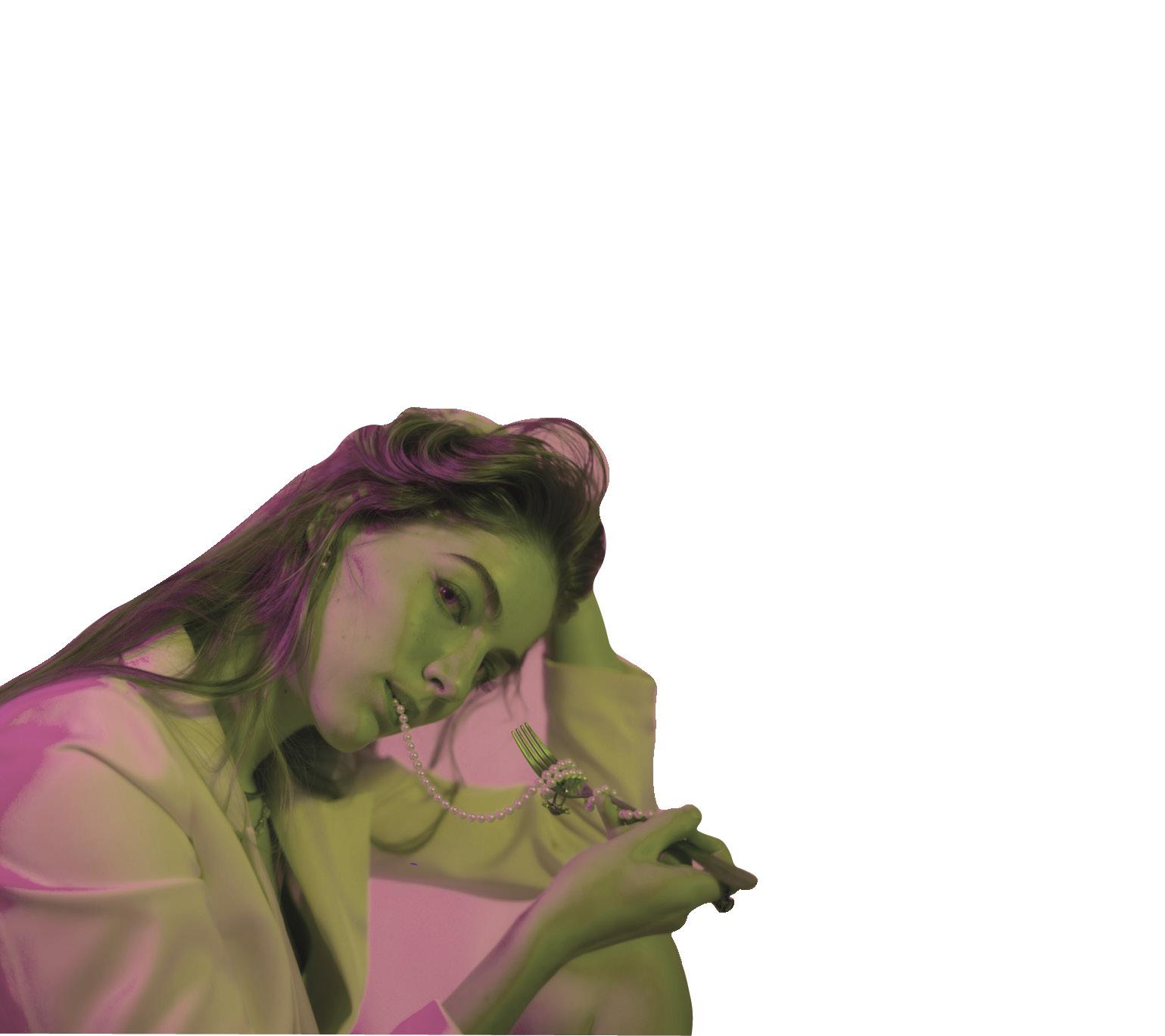
Writers: Emma Ehle & Lianna Davids
Photographer: Maha Afzal
Design: Maddie Case
Model: Emily Hansen & Katherine Kristofel
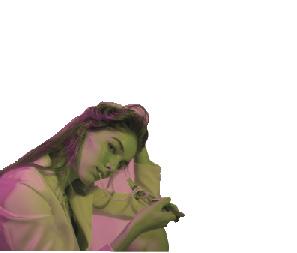
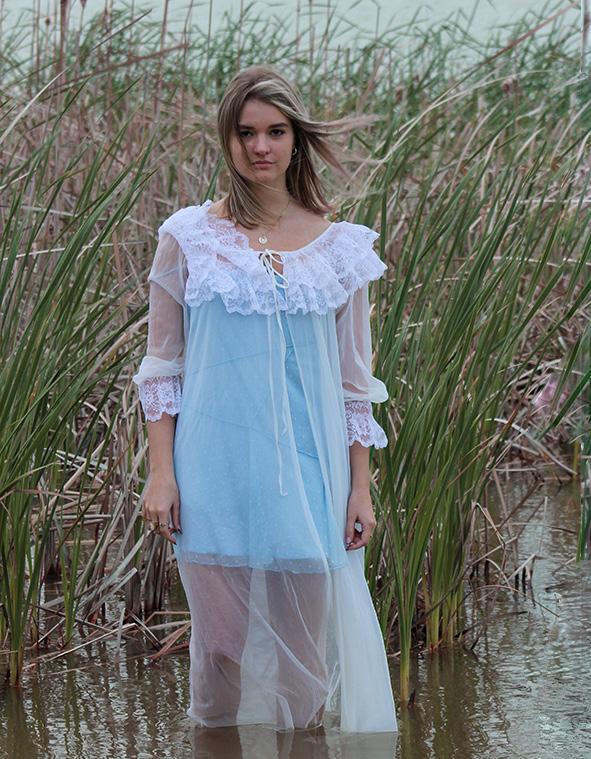
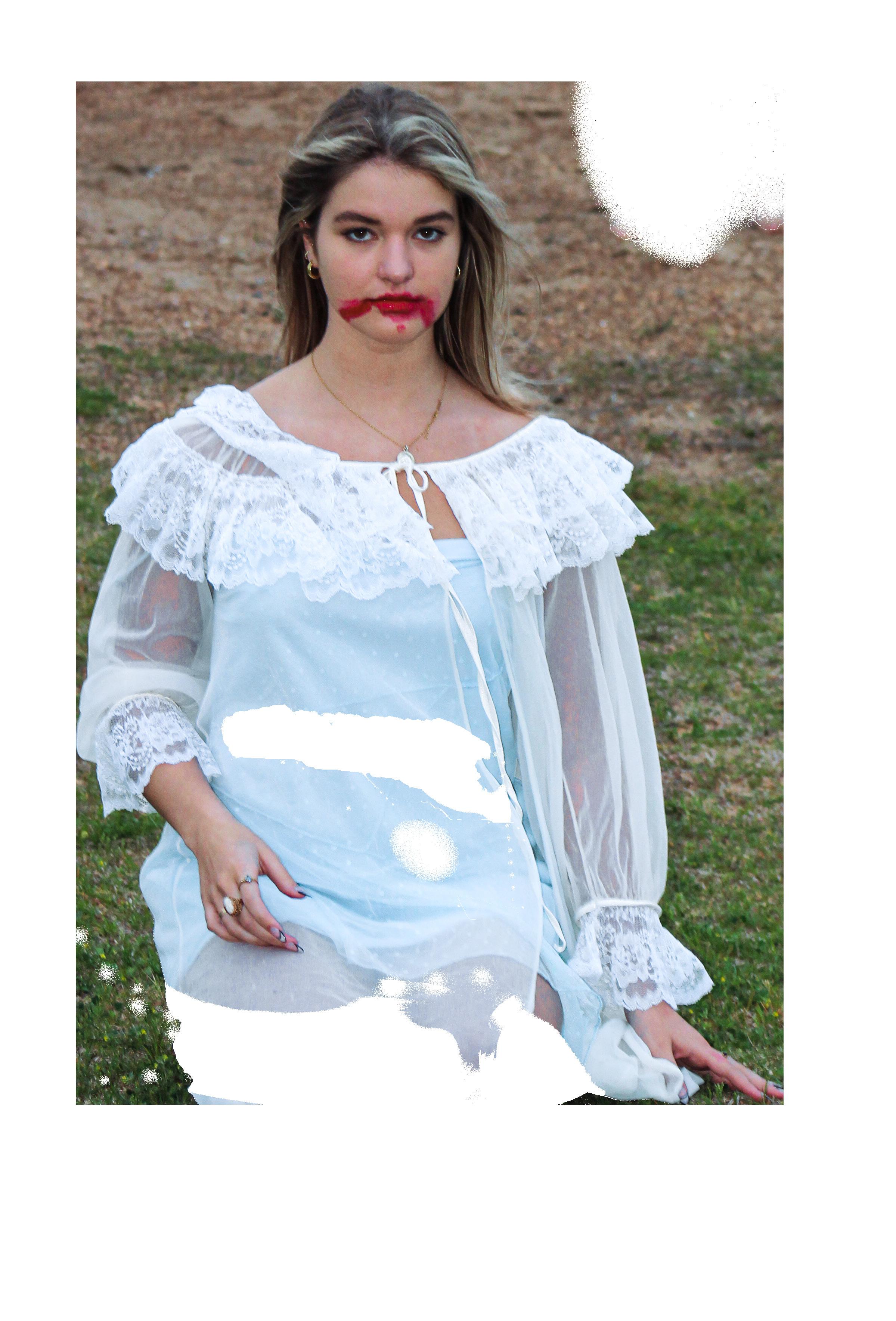
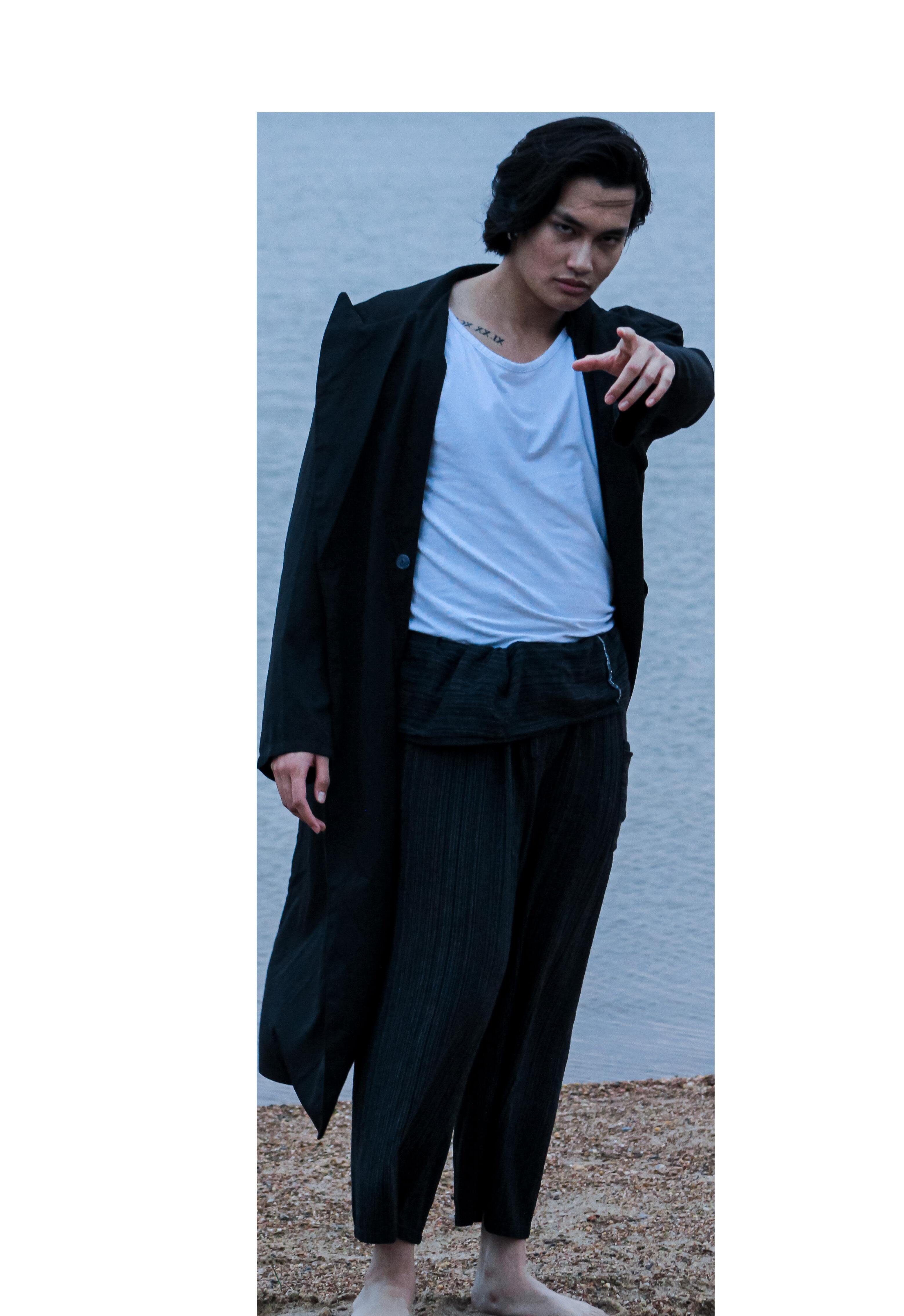
WRITER: Catherine White
PHOTOGRAPHER: Nikki Hinojosa
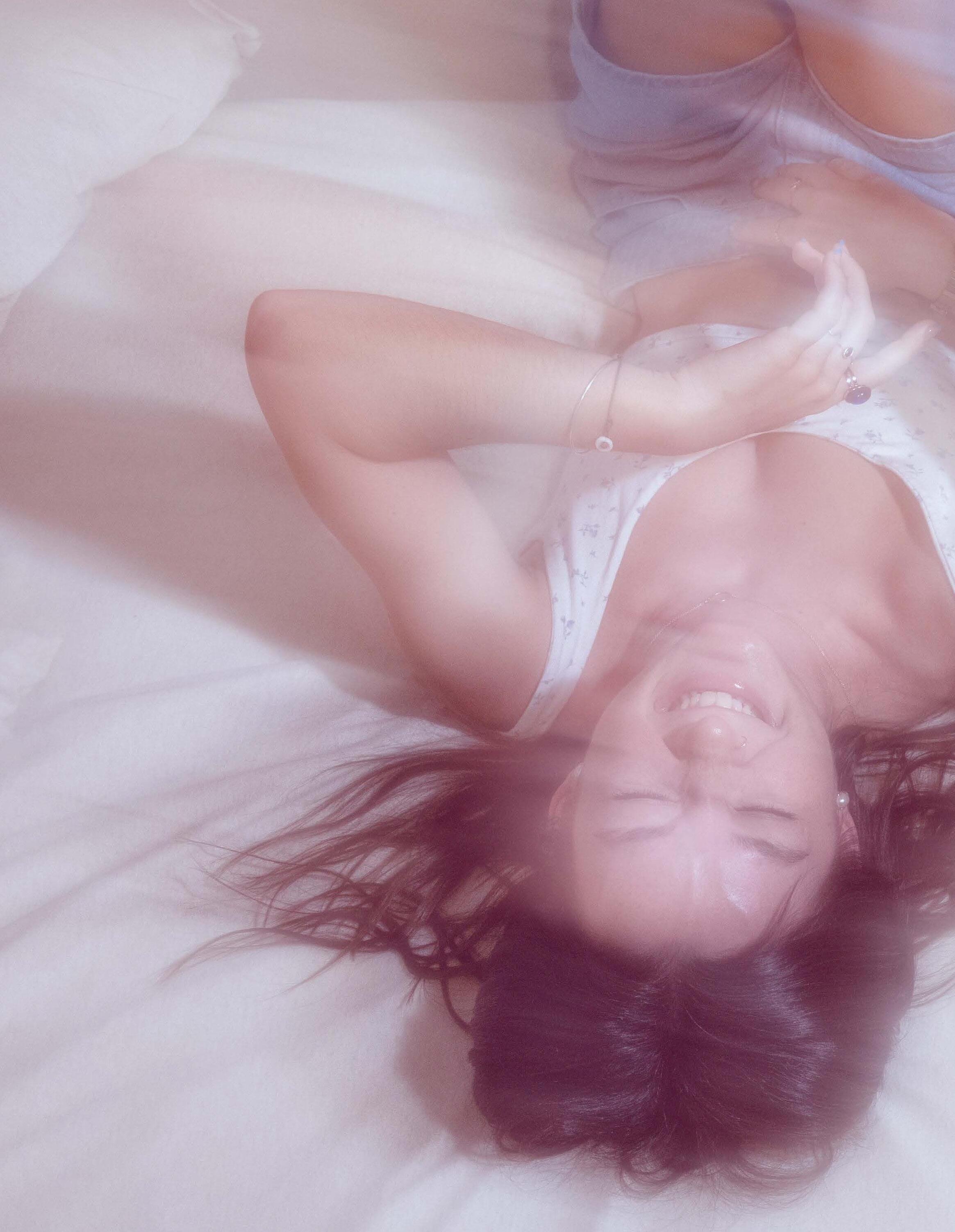
DESIGN: Izzy Davis
MODELS: Kenley Becker & Meghan Reed
Bedroom culture is a concept where girls can be within the privacy of their own area whilst being able to express their true emotions without the threat of judgment. The private space of a girl’s bedroom, much like her mind, can offer an onlooker a personal view of the female experience. Looking at a Petra Collins photograph feels as if you are entering this liminal space. It evokes the swirling emotions of adolescence: the confusion of a budding sexuality, the horror of being looked at but not perceived, and the ever-present threat of womanhood. It’s an intimate experience but one she shamelessly celebrates. She is not merely a photographer for hire, but rather a coveted auteur in her own right. But what is it about Petra Collins that makes everything she touches turn to gold? It could be the moody, dream-like atmosphere she effortlessly captures, an impression heightened by her exclusive usage of 35mm film. Perhaps, though, it is her ability to encapsulate the interiority of adolescence with sincerity and a refreshing shrewdness rarely seen in depictions of girlhood. Nonetheless, Collins has created a visual grammar that is both personal and universal, seamlessly blending fantasy with the naked truth of the female experience.
The Early Days
The art world has always been a boys’ club with the notion of femininity being determined by the likes of men, but the muses themselves rarely have agency in the portrayal of their own identities. The male gaze governs art. As a product of the ‘90s, Petra Collins was raised during a time awash in confusion about femininity; there was no right way to be a girl, only different ways to fail. Growing up in this wildly sexualized era, she regarded the female body as only a tool: “You are the thing that is sex, but you are not allowed to want it,” she told Dazed Magazine. The female body was, and continues to be, ubiquitously controlled by the media, as evidenced by the world of disconnected male-centric images. The Toronto native became aware of this issue while in high school, where she was exclusively taught about photography’s forefathers.
Dissatisfied with the lack of female agency in contemporary art, 15-year-old Petra Collins began photographing scenes from her own life, using her younger sister and friends as subjects. The resulting images were tender, yet raw as she was able to capture the essence of girlhood through images of abandoned bras, pink bathrooms, and melancholic bedrooms. The shoot, which took place without a production team, marked the beginning of her rise to fame. Collins continued to explore the female experience without objectification and was heavily influenced by the work of Ryan McKinley, a photographer known for his snap-shot scenes of sex and sybaritic youth. She gained notoriety on Tumblr before later publishing her work in Tavi Gevinson’s Rookie Magazine and launching her own online artistic collective, “The Ardorous,” in 2010.
Collins’ rise to fame coincided with the popularization of postmodern feminism, as discourse surrounding the male gaze became more widespread. This concept of the male gaze persists, battling to represent female subjects as diegetic storytellers rather than a scopophilic spectacle. And who better suited to interpret the true female experience than a woman herself?










